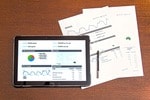
Should You Buy Alibaba Stock Despite the Risks?
Markets rebounded slightly after U.S. President Donald Trump announced a…


Markets rebounded slightly after U.S. President Donald Trump announced a…

Due to its disappointing reports, so-so management, and lack of…

Payments platform behemoth PayPal Holdings, Inc. (NASDAQ:PYPL) is going through…
Market Cap: $3.1T
P/E Ratio: 34x
Market Cap: $2.8T
P/E Ratio: 32x
Market Cap: $2.5T
P/E Ratio: 35x
Pegasystems [PEGA] is up 3.13% over the past day.
Summit Therapeutics [SMMT] is up 10.38% over the past day.
Enphase Energy [ENPH] is up 1.44% over the past day.